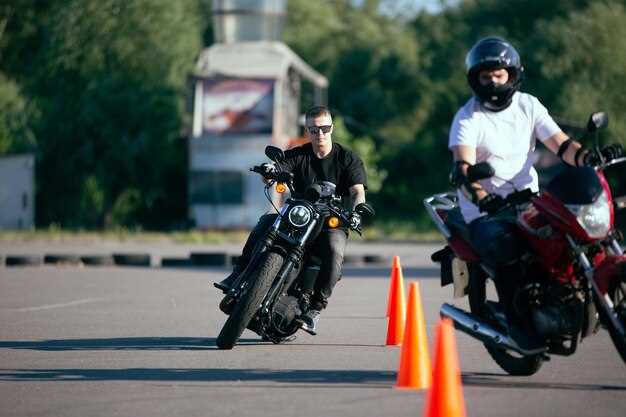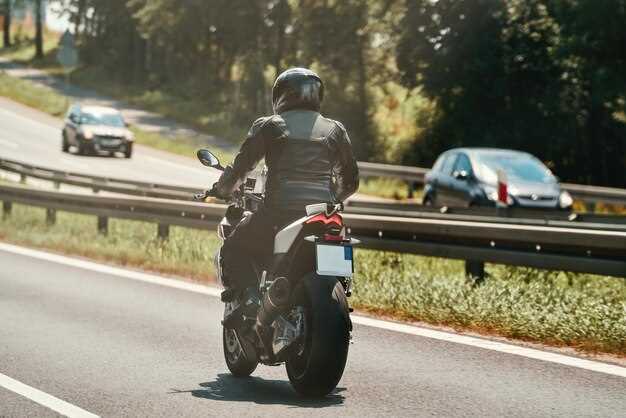

Motorcycling offers a unique blend of freedom and exhilaration, yet it demands a higher level of awareness and skill on the road. For riders, embracing defensive riding techniques is essential to enhance safety and minimize risks. Riding defensively involves anticipating potential hazards and proactively managing various situations that may arise while navigating through traffic.
Understanding the dynamics of the road is crucial for any motorcyclist. The complexities of urban environments, with their mix of vehicles and pedestrians, require a heightened level of vigilance. By employing defensive strategies, motorcyclists can mitigate risks, ensuring that they are prepared for the unexpected. Awareness of surrounding traffic, maintaining proper distance, and being mindful of road conditions are key elements in creating a safer riding experience.
In this article, we will explore effective defensive riding techniques that every motorcyclist should incorporate into their riding routine. By prioritizing safety and adopting these practices, riders can significantly increase their chances of avoiding accidents and enjoying their journeys with confidence.
Anticipating and Responding to Other Road Users

To enhance safety while riding, it is crucial for motorcyclists to anticipate the actions of other road users. Defensive riding involves being aware of your surroundings and predicting potential hazards. Observing the behavior of vehicles, pedestrians, and cyclists allows you to identify situations that may lead to dangerous encounters.
Always maintain a safe following distance to provide ample time to react to sudden stops or changes in traffic. Keep an eye on the rear-view mirrors and watch for vehicles that might merge, turn, or change lanes unexpectedly. This vigilance is key in preventing collisions and ensures a safer riding experience.
Road conditions can change quickly. Watch for pedestrians crossing the street, cyclists navigating through traffic, or vehicles making sudden maneuvers. Anticipate their movements by looking for indicators, such as turn signals, body language, and eye contact. In addition, be mindful of blind spots and ensure you can be seen by other drivers.
When faced with an unpredictable road user, having a plan helps. This can include maneuvering to a different lane, reducing speed, or even using the horn to alert others of your presence. Preparing a response in advance reduces reaction time and enhances overall safety.
Practicing these defensive riding techniques will not only help you respond effectively but also increase mutual respect on the road. By understanding and anticipating the actions of others, you contribute to a safer riding environment for everyone.
Mastering Visibility and Positioning on the Road
Effective visibility is crucial for safe riding. Ensuring that both you and your motorcycle are easily seen by other road users minimizes the risk of accidents. Positioning yourself strategically on the road enhances your visibility while also allowing for better reaction time to potential hazards. Always keep a safe distance from the vehicles in front to maintain a clear view of the road ahead.
When riding, stay in the lane position that offers the best visibility. The left or right third of your lane often provides a better viewing angle, allowing you to see and be seen more effectively. This positioning not only keeps you visible to other motorists but also gives you a better line of sight around corners and obstacles.
Utilize your motorcycle’s headlights at all times, even during the day. Bright, well-functioning lights make you more noticeable, particularly in low-visibility conditions. Additionally, wearing bright or reflective gear can enhance your visibility to other road users.
Always be aware of the road conditions and the positioning of other vehicles. Anticipate potential blind spots for cars and trucks, and adjust your riding position accordingly. Being proactive in your positioning can significantly reduce the likelihood of an accident.
Finally, maintain a defensive mindset while riding. Continuously scan your surroundings for potential risks, including pedestrians, cyclists, and unpredictable drivers. By mastering visibility and positioning on the road, you significantly improve your safety and the safety of those around you.
Practicing Emergency Maneuvers and Control Skills

One of the crucial aspects of riding defensively is mastering emergency maneuvers and control skills. These techniques are designed to enhance your ability to respond effectively in critical situations, ultimately ensuring riding safety.
Practicing emergency braking is fundamental. Riders should familiarize themselves with both front and rear brakes, as improper use can lead to loss of control. On dry surfaces, applying the front brake with a strong grip while moderately engaging the rear brake can help to stop quickly while maintaining stability.
Swerving is another essential maneuver for avoiding obstacles. To execute a proper swerve, lean your body in the direction you wish to go while simultaneously steering the motorcycle in that direction. This quick motion can be lifesaving when a sudden hazard appears in your path.
Countersteering is a technique that enables riders to navigate turns safely, especially at higher speeds. To initiate a turn, gently press the handlebar on the side opposite to the direction of the turn. This subtle action shifts the bike’s weight and allows for a smoother transition, enhancing overall control.
Lastly, practicing slow-speed maneuvers is vital for developing balance and precision. Engaging in exercises like tight turns, figure-eights, and u-turns offers invaluable experience in handling the motorcycle in confined spaces and tricky situations.
Incorporating these emergency maneuvers and control skills into your regular practice routine significantly contributes to your ability to ride defensively, ensuring both your safety and that of others on the road.
